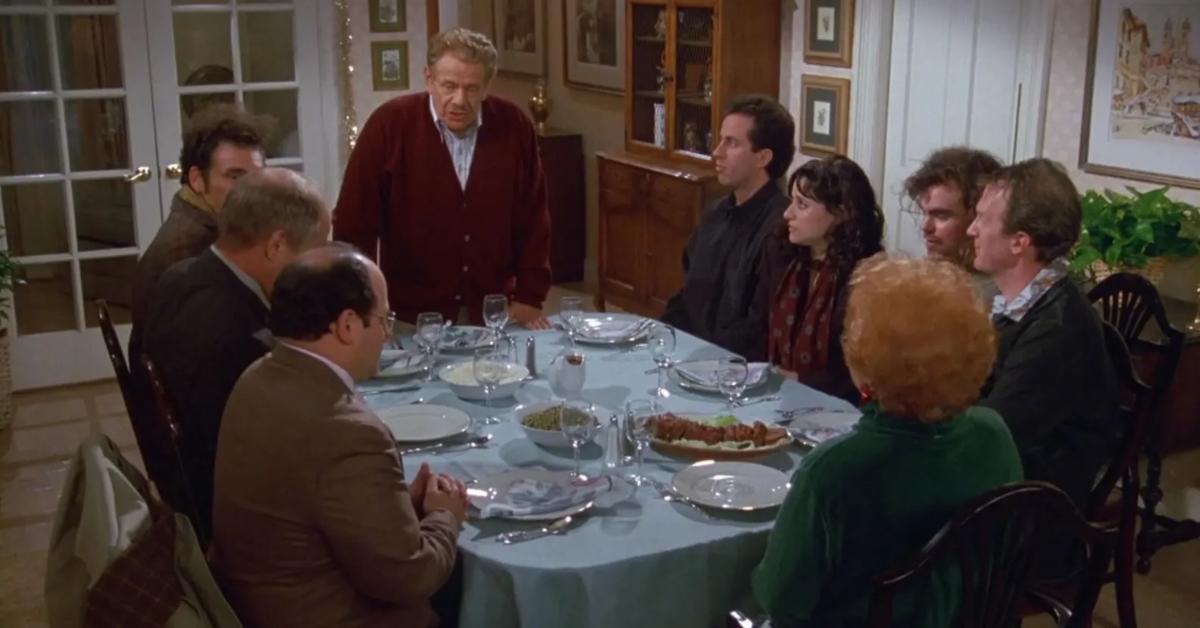'Seinfeld' Created Festivus for the Rest of Us — But Is It a Real Holiday?
"A Festivus for the rest of us!"
Published Dec. 23 2024, 12:53 p.m. ET

It's December 23, and you know what that means: Happy Christmas Eve Eve! However, if you're not quite feeling the holiday spirit, there's always Festivus, the celebration for "the rest of us."
Born from the iconic '90s sitcom Seinfeld, Festivus has since been embraced by millions worldwide as a quirky December 23 tradition. But is it truly a real holiday?
Here's what we know.

So, is Festivus a real holiday?
While Festivus isn't an official holiday recognized by the government or organizations, it's certainly become a beloved cultural tradition for many. In fact, Festivus is often referred to as both a parody holiday and a playful form of consumer resistance.
In 2022, the official Seinfeld social media accounts took things a step further, creating a Change.org, petition to make Festivus a national holiday on December 23. They even launched a campaign with the hashtag #MakeFestivusOfficial. The petition's video even pointed out that Festivus deserves recognition like other unofficial holidays, such as National Bagel Day, Boss's Day, and Hug a Musician Day.
Festivus was first popularized by the 1997 Seinfeld episode "The Strike," in which Frank Costanza (Jerry Stiller) invents the holiday as an alternative to the commercialized Christmas. Since then, it has gained a massive global following, with people all over the world celebrating it each December 23.
The holiday actually has roots dating back to 1966, when it was created by author and editor Daniel O'Keefe, the father of Seinfeld writer Dan O'Keefe. Originally, it was a family tradition to commemorate the anniversary of Daniel's first date with his future wife, Deborah.
Dan O'Keefe's father originated many of the now-beloved Festivus traditions.
Many of the current Festivus traditions, including the "Airing of Grievances" and "Feats of Strength," have been around since the first celebration. However, one quirky tradition didn't make it into the Seinfeld episode: O'Keefe's father used to put a clock in a bag and nail it to a wall.
It was never the same clock or bag, but always the same wall. Additionally, the nailing was often done secretly, only to be proudly revealed to the family.
In a 2013 interview with CNN, the younger O'Keefe shared, "The real symbol of the holiday was a clock that my dad put in a bag and nailed to the wall every year...I don't know why I don't know what it means, he would never tell me. He would always say, 'That's not for you to know.'"
In the Seinfeld version, Festivus kicks off with an undecorated aluminum pole. It also includes the "Airing of Grievances," where during the Festivus meal, everyone vents about how they've been disappointed by others and the world over the past year.
After the meal, the "Feats of Strength" take place, where the head of the household picks someone to challenge to a wrestling match. According to tradition, Festivus isn't over until the head of the household has been pinned.
The phrase "a Festivus for the rest of us" also has a deeper meaning. Originally, it referred to the surviving family members after the death of Daniel O'Keefe's mother, Jeanette, in 1976 — "the rest of us" being the living, as opposed to the deceased.